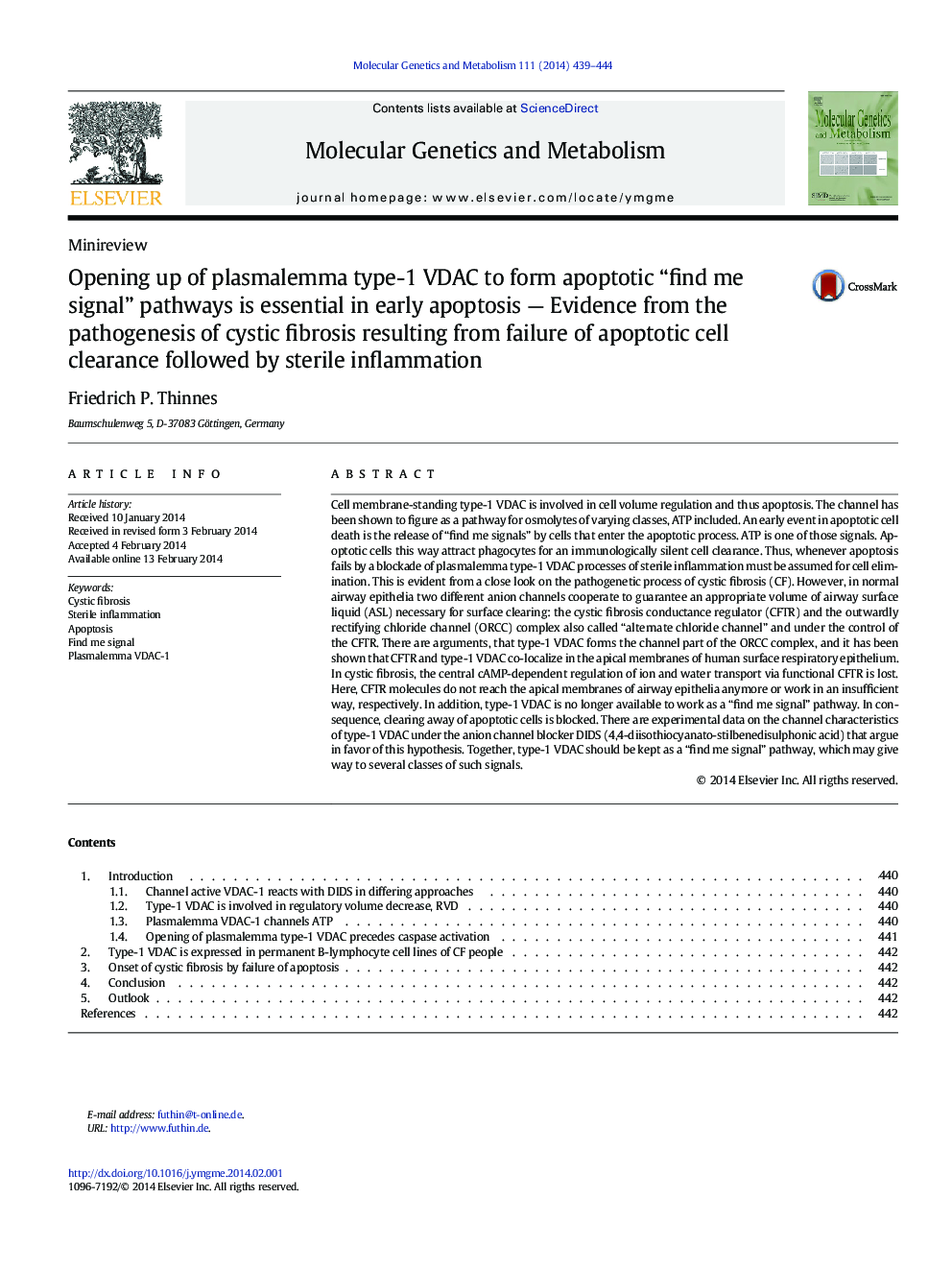| کد مقاله | کد نشریه | سال انتشار | مقاله انگلیسی | نسخه تمام متن |
|---|---|---|---|---|
| 10833615 | 1065801 | 2014 | 6 صفحه PDF | دانلود رایگان |
عنوان انگلیسی مقاله ISI
Opening up of plasmalemma type-1 VDAC to form apoptotic “find me signal” pathways is essential in early apoptosis - Evidence from the pathogenesis of cystic fibrosis resulting from failure of apoptotic cell clearance followed by sterile inflammation
دانلود مقاله + سفارش ترجمه
دانلود مقاله ISI انگلیسی
رایگان برای ایرانیان
کلمات کلیدی
موضوعات مرتبط
علوم زیستی و بیوفناوری
بیوشیمی، ژنتیک و زیست شناسی مولکولی
زیست شیمی
پیش نمایش صفحه اول مقاله

چکیده انگلیسی
Cell membrane-standing type-1 VDAC is involved in cell volume regulation and thus apoptosis. The channel has been shown to figure as a pathway for osmolytes of varying classes, ATP included. An early event in apoptotic cell death is the release of “find me signals” by cells that enter the apoptotic process. ATP is one of those signals. Apoptotic cells this way attract phagocytes for an immunologically silent cell clearance. Thus, whenever apoptosis fails by a blockade of plasmalemma type-1 VDAC processes of sterile inflammation must be assumed for cell elimination. This is evident from a close look on the pathogenetic process of cystic fibrosis (CF). However, in normal airway epithelia two different anion channels cooperate to guarantee an appropriate volume of airway surface liquid (ASL) necessary for surface clearing: the cystic fibrosis conductance regulator (CFTR) and the outwardly rectifying chloride channel (ORCC) complex also called “alternate chloride channel” and under the control of the CFTR. There are arguments, that type-1 VDAC forms the channel part of the ORCC complex, and it has been shown that CFTR and type-1 VDAC co-localize in the apical membranes of human surface respiratory epithelium. In cystic fibrosis, the central cAMP-dependent regulation of ion and water transport via functional CFTR is lost. Here, CFTR molecules do not reach the apical membranes of airway epithelia anymore or work in an insufficient way, respectively. In addition, type-1 VDAC is no longer available to work as a “find me signal” pathway. In consequence, clearing away of apoptotic cells is blocked. There are experimental data on the channel characteristics of type-1 VDAC under the anion channel blocker DIDS (4,4-diisothiocyanato-stilbenedisulphonic acid) that argue in favor of this hypothesis. Together, type-1 VDAC should be kept as a “find me signal” pathway, which may give way to several classes of such signals.
ناشر
Database: Elsevier - ScienceDirect (ساینس دایرکت)
Journal: Molecular Genetics and Metabolism - Volume 111, Issue 4, April 2014, Pages 439-444
Journal: Molecular Genetics and Metabolism - Volume 111, Issue 4, April 2014, Pages 439-444
نویسندگان
Friedrich P. Thinnes,